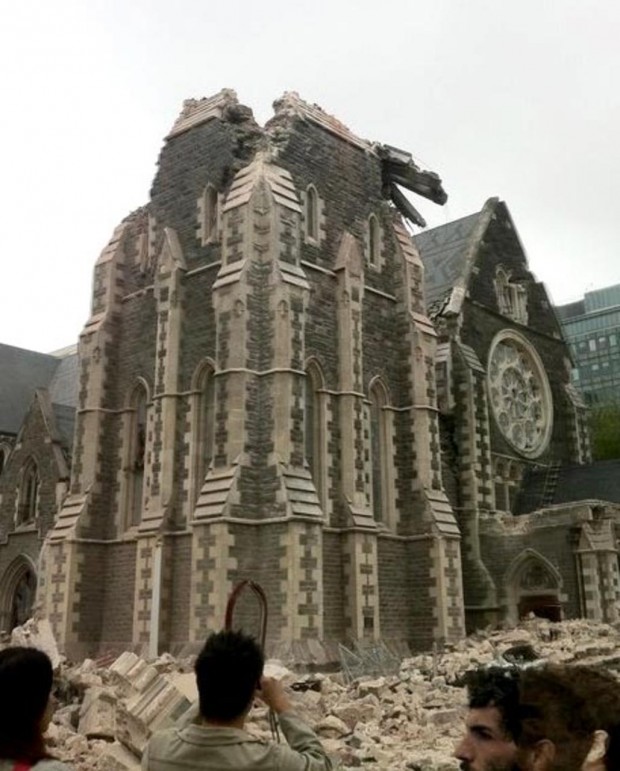S&P Downgrades PartnerRe
Ratings agency Standard & Poor’s on Friday [Feb.17] downgraded its insurer financial strength [IFS] ratings of Bermudian reinsurer PartnerRe’s operating subsidiaries by one notch to A+ from AA-.
The agency said the downgrade reflected lower-than-expected operating results reported by the company in 2011, noting that PartnerRe was a “negative outlier among its peers in 2011″ having suffered significant catastrophe losses.
“PartnerRe was a negative outlier among its peers in 2011, with significant catastrophe losses, causing the group to report a nonlife combined ratio of 125% and a net loss of $520 million, which represented 7% of its reported total capital of $7.3 billion at year-end 2011,” said an S&P analyst. “Although the group’s incurred catastrophe losses were within management’s stated tolerances for its lines of business and different regions, they highlighted the group’s exposure to moderate to high earnings and capital volatility, which we believe is more in line with peers rated A+.
“In addition, we believe management’s execution in fully re-optimizing PartnerRe’s book of business and re-adjusting risk exposures to levels more in line with management’s risk appetite following the PARIS RE acquisition at the end of 2009 has been slower than we expected. In our view, this is reflected in the significant adjustments PartnerRe made in particular to its property/catastrophe book of business over the past year, with significant reductions across risk zones and programs.”
The ratings agency said it will take some time until the full potential benefit for these changes can be seen in reducing the volatility of the group’s prospective earnings.
“Additionally, we believe that PartnerRe’s overall enterprise risk management capabilities have not fully kept pace with the changing risk profile of the larger and more complex organisation that was created following the PARIS RE
acquisition,” said S&P. “Given these factors, we have lowered our view of PartnerRe’s strategic risk management controls to adequate from strong and, as a result, have changed our overall view of the group’s enterprise risk management [ERM] to adequate with strong risk controls from our previous view of strong.”
Additional factors that contributed to the downgrade include the fact that although Standard & Poor’s continues to view PartnerRe’s competitive position as very strong given its diversified platform and long-held relationships with
clients in many different regions of the world, the ratings agency believes that in more recent years the group has not been able to translate these competitive advantages into operating results that are stronger than its peers.
“Given management’s significant reductions in property/catastrophe risk exposures during 2011 and
the January 2012 renewal season, we expect that these changes will help reduce the group’s potential volatility and severity of losses in the future,” said the ratings agency.
“However, in our view, PartnerRe’s prospective operating performance is likely to remain in the strong range over the medium term and more in line with other A+ rated peers.”
S&P said the group’s capital adequacy remains very strong and supportive of the ratings. The group’s conservative investment portfolio and its historically conservative reserving practices for long-tail lines enhance its quality of capital.
At year-end 2011, 92% of the invested asset mix consisted of cash, short-term investments, and bonds. Liquidity remains very strong, reflecting $1.4 billion in cash and short-term investments on the balance sheet at year-end 2011, strong operating cash flows of $574 million for 2011 — though
lower than 2010 because of catastrophe-related claims payments — and access to additional liquidity through credit facilities.
“PartnerRe has historically held its long-tail reserves conservatively, with the group’s booked reserves generally approaching its high-range estimates,” said S&P. “PartnerRe’s reserving practices relating to long-tail reserves has not changed and prior year reserve development remained favorable during 2011. In 2011, on a quarter-over-quarter basis, PartnerRe significantly revised its initial loss estimates for catastrophe losses incurred during the first half of the year,
primarily for the Japanese earthquake and–to a lesser extent–the New Zealand earthquake [pictured].
“Most other global reinsurers experienced similar adverse loss
reserve development for these losses compared with their initial estimates. PartnerRe’s continued loss estimate revisions throughout the year, in our opinion, demonstrated that the group’s reserving practices and methodology for
its short-tail risks are in line with, but not better than, those of its peers.”
S&P said its outlook for PartnerRe is stable and, assuming a normalized catastrophe load of about 10-14 points in the loss ratio for 2012, the ratings agency expects the group’s nonlife combined ratio to be 92%-96% and its return on revenue to be higher than 12%.
“We expect capital adequacy to remain very strong over the next two years and adjusted financial leverage as measured by total debt plus preferreds to total capital to stay moderate at less than 25%,” said S&P. “We do not expect to raise the ratings in the near future, reflecting our view that PartnerRe’s average operating performance is unlikely to be above its
peer group over the next few years.
“If our view on the group’s ERM improves, it would also be an important factor leading to any potential positive movement in the ratings. Factors that could lead us to lower the ratings would include a significant deterioration in the group’s competitive position, significantly lower-than-expected operating performance, or deterioration in the group’s capital adequacy or reserving practices.”


